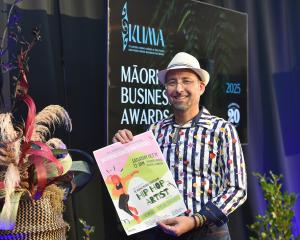
But should that happen, the Dunedin helicopter pilot would be well equipped to deal with it. After all, such experiences used to be part of his daily working life.
Mr Williams and his wife Kirsty recently established Highland Helicopters, a Taieri-based business with a focus on agricultural work and high-end air transport.
It’s a much tamer existence than some of his previous adrenaline-filled exploits; racing motorcycles at high speeds on the legendary Isle of Man circuit, or flying helicopters in the danger-ridden highlands of Papua New Guinea.
But, as the father-of-three explained, it was time for a more settled lifestyle.

Mr Williams (47) grew up on the Taieri and began his career at Outram Garage, where he served his apprenticeship as a mechanic.
He ended up in Japan, fixing motorcycles for an export company, and got into the road race series in New Zealand for three years.
He came fifth in only his second year and, when the third year rolled round, he had high hopes of success.
But he broke his collarbone and knocked himself out in a crash two weeks before the start. He managed to finish fifth again, despite having his collarbone strapped with duct tape.
An invitation to ride on the Isle of Man in 1994 was a "real eye-opener" and coincided with the death of Irishman Mark Farmer in a practice session.

Going past the scene of the crash was a "bit of a rude awakening" to what could go wrong.
"The down side was when people got it wrong, they died," he said.
So dangerous is the Isle of Man circuit, there have been more than 270 recorded competitor deaths since 1910.
Despite thinking he would not return, he did go back a few times and ended up with two wins, including in the Isle of Man Tourist Trophy (TT) 400cc class in 1998, averaging 175kmh.
Racing on the Isle of Man came with high public interest. There would be queues of people lining up to get signatures and, when he returned in 2007, he was recognised by a taxi driver despite not having been there for seven years.
Money made from his racing, coupled with working in Japan where he worked on and off for six years, was to fund the next phase of his life — learning how to fly a helicopter.
His first trial flights were in 1997-98 and he caught the bug, which encouraged him to save his money from "working and winning".
He completed his commercial licence in 2001 and had intended to head to the United States to do some general utility work in Nevada.
But after the terrorism attack on the World Trade Centre’s Twin Towers that year, that plan was shelved.
Back in Dunedin, there was little work and he worked as a mechanic again before getting a job as a loader driver at Helicopters Otago for five years, followed by a five-year stint as a pilot with the company, doing both agricultural and commercial work.
Then came a stint flying in Papua New Guinea working month on, month off, an experience Mr Williams said was the best thing he had done in aviation.
He was the sole pilot at an exploration camp for two years so, for everything that went on during his rostered time on, he was "it", whether that was moving drill rigs, medical evacuations — including during a measles epidemic — or flying armed police around.
All the while, there was a very real threat that someone would "come out of the bush with an assault rifle and have a go".
"You didn’t know what was going to happen. From daylight to dark, you had to be ready for anything," he said.
One day, he was flying down to the valley floor, on a path he took regularly, when he spied movement in the trees. Then he saw a man throwing a spear up at him. Fortunately, he was about 150m above the spear-thrower and he watched as the man started running as the spear came back down.
Another time, he was level with three children, when they started throwing rocks at his helicopter.
"They’d throw rocks at you, and then they’d wave," he said.
During pay runs, accompanied by police, the back of the helicopter would be filled with sports bags full of money, which would be dropped into corrugated iron and barbed wire compounds.
Hopeful locals would be nearby with their hands in the air. When he asked how much money he was carrying, he was told: "you don’t want to know".
From there, he helped out at North Otago-based Central South Island Helicopters for two years before seeing an opportunity to start his own business.
Mr and Mrs Williams bought a Bell Longranger, which can carry six people, and have employed a loader driver.
They intended to cover from Palmerston to Balclutha and inland to Central Otago doing agricultural work, Mr Williams said.
There were similarities between flying helicopters and racing motorcycles, he said.
"There’s no recovery if you do it wrong. You can’t have that risk-taking. Statistically, it’ll get you.
"You can’t think you’re better than that or it won’t happen to you. I saw graphic examples of that. You’ve got to dot your i’s, cross your t’s," he said.
"I do miss the motorbikes dearly but that was because it was so much fun ... When you’re riding around there and you’re hitting all your points and it’s smooth and it’s really comfortable ... it’s a feeling of satisfaction," he said.












